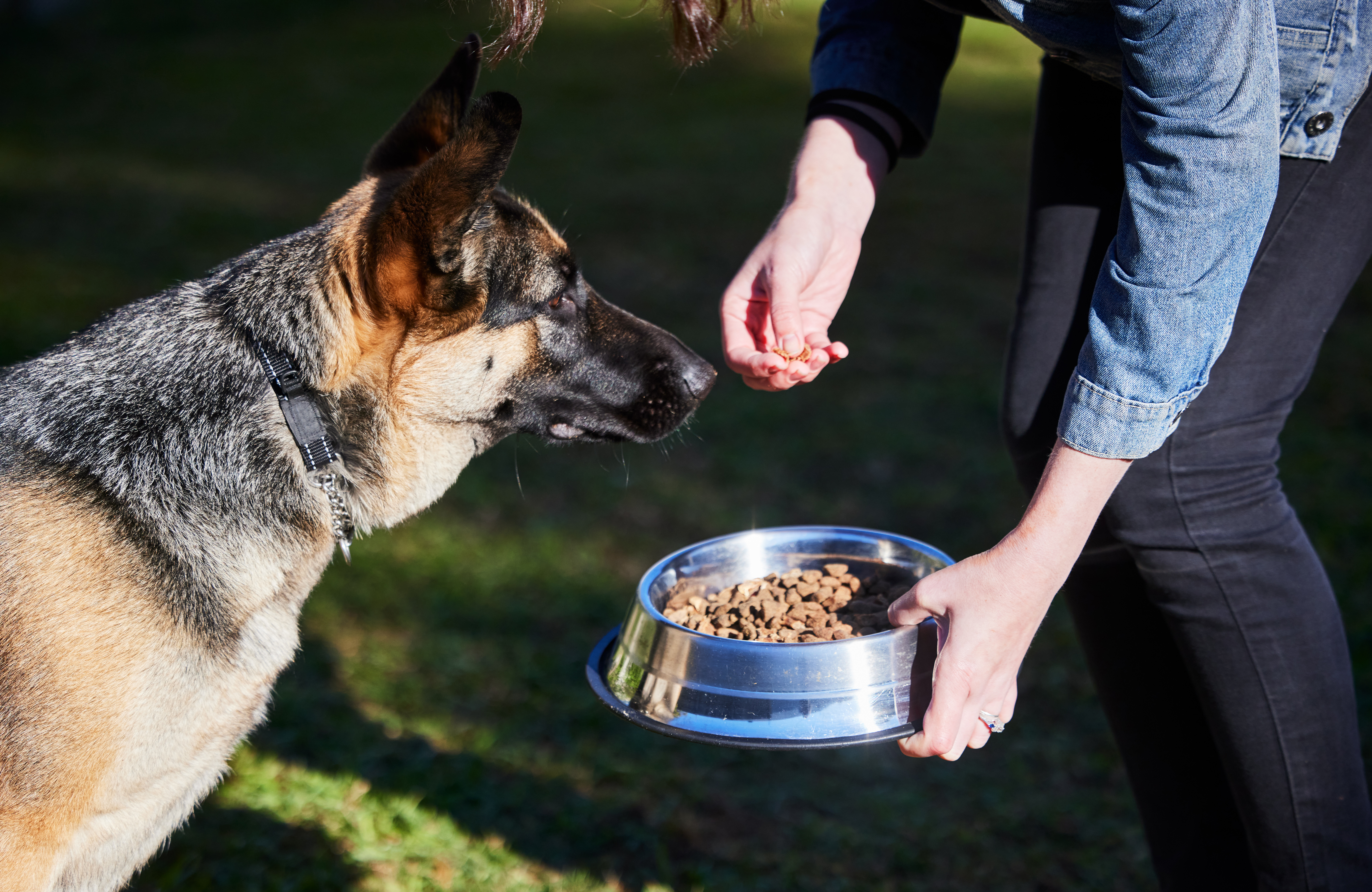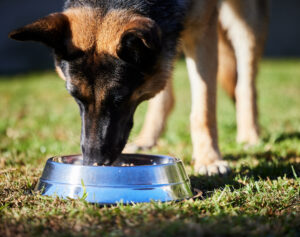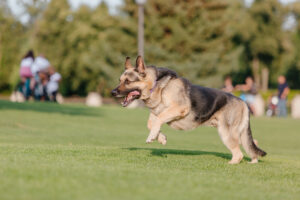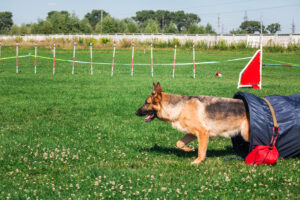






I’ve seen what happens when people get burglary protection dogs and aren’t prepared enough for the realities of living with working dogs.
Unfortunately, it’s a growing trend, particularly in an era when everyone’s chasing the next big thing.
And when things start going south—which, spoiler alert, they usually do—they panic and turn to those flashy YouTube trainers. You know the ones – all fanny packs and catchphrases.
And somehow that just makes things worse!
Now, I’ve been involved with protection dogs for years. And I want to have some straight talk about nutrition and care tips for burglary protection dogs.
Too many handlers overlook this crucial piece of the puzzle. They focus on fancy training techniques and forget that a protection dog is, first and foremost, an elite canine athlete.
And for that dog to be always on point, you need to dial in its nutrition and care. Period.
 The Right Diet: Quality Over Quantity
The Right Diet: Quality Over QuantityIf you’re feeding your protection dog the same kibble as the neighbor’s Shih Tzu, you’re doing it wrong.
These dogs are athletes. They’re muscle-bound, high-energy, and constantly on alert.
They need premium fuel to perform at its peak.
What to feed:
What to avoid:
And here’s a pro tip: rotate proteins. Different meats offer different amino acid profiles. Variety isn’t just the spice of life – it’s insurance against nutritional gaps.
It’s tempting to think that because your dog works hard, they should eat more. But overfeeding leads to obesity, and obesity leads to a sluggish, ineffective guard dog.
Stick to recommended portion sizes based on your dog’s weight, age, and activity level.
Dogs can’t tell you when they’re thirsty, and they’re not exactly sipping on a sports drink between reps.
Keep fresh water accessible at all times. Dehydration can zap their energy and impair performance.
If your dog is panting excessively or seems lethargic, they might be dehydrated.

Regular exercise isn’t just about burning off energy—it’s about keeping your dog sharp, focused, and ready to act.
Aim for at least an hour of vigorous exercise daily. We’re talking fetch, agility courses, or tug-of-war—something that gets the blood pumping.
But here’s where most people screw up: they do the same routine day in, day out. That’s a fast track to a dog that’s physically fit but mentally checked out.
Mix it up. One day it’s a long run. The next, it’s an obstacle course in the backyard. Then maybe some swimming.
Keep that canine brain guessing.
Your protection dog is smart. And with great intelligence comes great boredom if you’re not careful.
And with great boredom comes a destructive dog. Mental stimulation is just as important as physical exercise.
So how do you keep their mind active:
🐾 Puzzle Toys: Start simple and ramp up the difficulty. Your goal? A dog that attacks mental challenges with the same intensity it would an intruder.
🐾 Scent Work: Hide treats, toys, or scented objects around your property. Start easy, then make it harder. Use different scents, increase the search area.
🐾 Obedience 2.0: Forget sit and stay. Try advanced stuff here. Teach multi-step commands. Have your dog retrieve specific objects by name. Practice directional commands from a distance.
🐾 Problem-Solving Scenarios: Set up situations where your dog has to figure things out. Maybe it’s navigating a makeshift obstacle course to reach you. Or finding a hidden “intruder” (aka a family member or friend) in the house.
This will keep their minds engaged and prevent unwanted behaviors like chewing up your favorite pair of shoes.
Your protection dog is an investment. And like any investment, you need to protect it.
Regular vet checkups can catch health issues before they become big problems. Keep up with vaccinations, deworming, and flea and tick prevention.
You need to be proactive. We’re talking quarterly check-ups, minimum. Full blood work annually. Why? Because by the time your dog shows symptoms, you’re already behind the curve.
Find a vet who specializes in working dogs. Not all vets understand the unique needs of a protection dog.
You need someone who gets it, someone who can spot the subtle signs that might indicate a problem down the line.
And let’s talk about emergency care. Do you have a plan? Do you know where the nearest 24-hour vet clinic is? Do you have a canine first aid kit?
If the answer to any of these is no, you’re not prepared. Fix it. Now.
Sure, a well-groomed dog looks impressive, but grooming is about more than just aesthetics.
Regular brushing helps with shedding and keeps your dog’s coat healthy. Plus, it’s an opportunity to check for any lumps, bumps, or parasites.
Here’s your grooming checklist:
Just like some of us take supplements to get that little extra boost, your protection dog can benefit too.
Joint supplements like glucosamine and chondroitin can help keep their joints in good shape, especially as they age.
Probiotics can aid digestion, and fish oil can enhance their coat and skin health.
Antioxidants will help in combating oxidative stress.
While Vitamin E and Selenium work synergistically to support muscle function and recovery.
But remember, supplements are just that—supplements. They’re not a replacement for a balanced diet.
Also, timing matters.
Some supplements are best given with food, others on an empty stomach. Some work best post-exercise, others pre-emptively.
Do your research or consult a canine nutritionist.

You wouldn’t go years without refreshing your CPR certification, right? Same goes for your dog’s training.
You see skills deteriorate. That razor-sharp responsiveness? It dulls. That lightning-fast reaction time? It slows.
Without consistent reinforcement, your protection dog becomes nothing more than an expensive pet.
So, what’s the prescription?
Daily doses of discipline i.e. obedience drills, scenario training, bite work, environmental exposure, agility training, scent work, and handler protection drills.
And here’s something most people miss: Train yourself.
A protection dog is only as good as its handler. Know the commands, know the signals, know how to read your dog.
Yes, you’re the owner; but also a partner in a high-stakes operation.
Are you ready to commit?
Because a protection dog isn’t a set-it-and-forget-it solution. It’s a living security system that needs top-tier maintenance, constant updating, and upgrading.
Anything less, and you’re not just shortchanging your dog – you’re compromising your own safety.
Now, get to work. Your burglary protection dog from Vanguard Protection Dogs is counting on you to keep it at the top of its game.
Don’t let it down.
Contact us now to learn more about how we can help you with the best protection solutions.